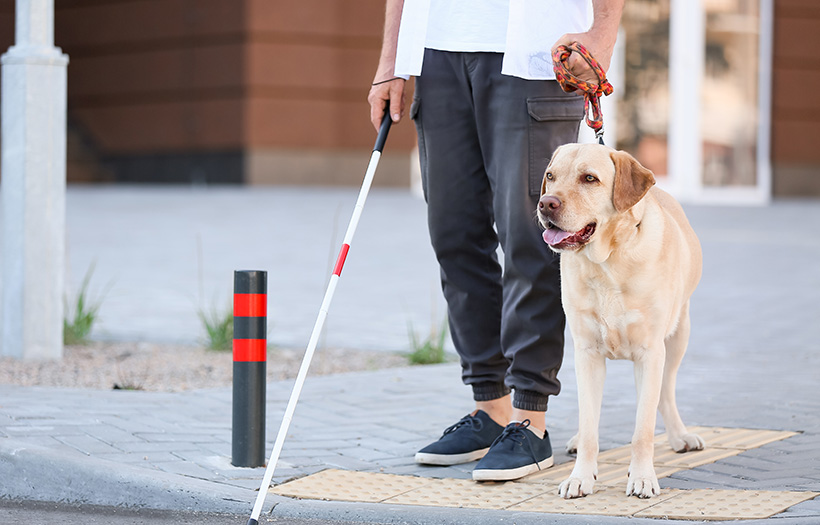Service Dogs

These days we hear a lot about pets that provide support in one way or another to their owners. This topic is dedicated to looking at the difference between service dogs, therapy dogs, and emotional support animals. Each of these support dogs has a different function and the designations ascribed to them are not interchangeable.
Service Dogs
A service dog is any dog that is trained, usually by an organization or a professional, to assist a person with a disability. The owner and service dog work as a team to help mitigate the owner’s disability. Service dogs help their owners to be safe and gain greater independence.
Service dogs are usually chosen by breed for certain characteristics such as temperament, versatility, intelligence, and size. For example, 60 to 70% of guide dogs for the blind are usually Labrador Retrievers. They are hard-working and large enough to guide their owners but small enough to fit on public transportation or under a restaurant table.
Under the Americans with Disabilities Act, service dogs are allowed access to all public places and buildings including but not limited to restaurants, libraries, stores, and churches. Additionally, the DOT Air Carrier Access Act, the DOT/HUD Fair Housing Act and the Federal Rehabilitation Act allow people with disabilities to be accompanied by their service dog in a variety of other circumstances including housing that does not allow pets.
Is important to realize that service dogs are not pets. When they are in their harness and working, it is not permissible to pet them or interact with them in anyway unless the owner gives permission. Types of service dogs include but are not limited to:
- Guide dogs for the blind
- Mobility aid dogs
- Seizure alert dogs
- PTSD service dogs
- Hearing alert dogs
- Diabetes alert dogs
- Migraine alert dogs
- Narcolepsy alert dog
- Psychiatric service dog
Therapy Dogs
A therapy dog is usually a pet it has been trained by their owner to provide comfort and affection to people in long-term care, hospitals, retirement homes, schools for other stressful situations. Since therapy dogs are usually pets first, they come in all sizes and breeds. They must have a stable, friendly temperament, be confident, enjoy human contact and be comfortable in a variety of situations. This includes working around wheelchairs, crutches, a variety of unusual noises, and the unpredictable movements of children. Unlike service dogs, therapy dogs are encouraged to socialize and interact with people. Therapy dogs do not enjoy the legal protection to go anywhere service dogs can. Since therapy dogs have no legal designation, they must have permission ahead of time to visit most facilities or institutions, and this permission can be withdrawn at any time.
Therapy dogs are typically trained and socialized by their owners but must meet a minimum standard to be certified by an overseeing organization such as Therapy Dog International.
Emotional Support Pets
Finally, there are emotional support animals. These are pets, usually dogs, whose primary role is to provide emotional support and stability to an emotionally unstable person. For those with severe depression or debilitating emotional trauma, the gift of companionship and unconditional love can be the only way to manage the routine stresses of their lives. These pets generally do not undergo any specialized training. Emotional support animals do not enjoy any ADA protection and cannot go in any public place where pets are not allowed. However, DOT/HUD’s Fair Housing Act does allow disabled owners of emotional support animals to live in housing with no pet policies and the DOT’s Air Carrier Access Act allows emotional support animals to accompany owners on airplanes with proof of the owner’s disability.
